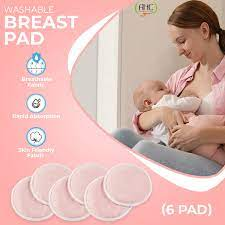Ultimate Maternity Bag Hospital Checklist: Pack for a Stress-Free Birth
Preparing for the arrival of your little one is an exciting journey, and one of the essential tasks on your to-do list is packing your maternity bag hospital checklist. Ensuring that the pack in your hospital bag is well-organized and contains all the necessary items can significantly contribute to a smooth and stress-free birth experience. In this blog post, we’ve compiled the ultimate maternity hospital bag checklist to help you pack with confidence and peace of mind.
Why is a Well-Packed Maternity Bag Important?
Before we dive into the checklist, let’s discuss why having a well-prepared maternity bag is crucial. When the time comes for your new baby one’s arrival, you won’t want to worry about missing essential items. Having a well-packed bag ensures you have everything you need within easy reach, making your stay at the hospital more comfortable and stress-free. It allows you to focus on what truly matters – the birth of your child.
The Ultimate Maternity Hospital Bag Checklist
- Personal Identification and Medical Documents:
- ID, driver’s license, and insurance information
- Birth plan (if you have one)
- Hospital registration forms (if required)
- Comfortable Clothing:
- Loose-fitting nightgowns or pajamas
- Comfortable underwear and nursing bras
- Warm socks and slippers
- Toiletries:
- Toothbrush and toothpaste
- Shampoo and conditioner
- Body wash or soap
- Hair ties and a brush
- Lip balm
- Essentials for Baby:
- Baby clothes (onesies, sleepers, hats)
- Swaddle blankets
- Nappies and wipes
- Baby mittens and booties
- Infant car seat (for the journey home)
- Snacks and Hydration:
- Bottled water or a reusable water bottle
- Healthy snacks for energy during labor
- Electrolyte drinks (optional)
- Electronics:
- Mobile phone and charger
- Camera or video camera (if desired)
- Entertainment (e.g., books, magazines, music)
- Supportive Items:
- Birthing ball or cushion (if preferred)
- Massage oil or lotion
- A comforting item from home (e.g., a pillow or blanket)
- Postpartum Care Supplies:
- Maternity pads
- Nipple cream
- Nursing pads
- Over-the-counter pain relief medication (consult with your healthcare provider)
- Important Contact Information:
- Contact numbers for your healthcare provider and birthing partner
- Emergency contacts
Packing Tips:
- Organize in Sections: Pack items in separate bags or pouches for easy access. Consider using clear bags to see the contents quickly.
- Label Everything: Label your bags to avoid confusion during your stay.
- Pre-Pack Snacks: Prepare snacks in advance to have them ready when needed.
- Check Expiry Dates: Ensure that all items, especially toiletries and snacks, are within their expiry dates.
Maternity Hospital Bag Essentials for Mom and Baby
Congratulations on your upcoming bundle of joy! One of the exciting (and essential) tasks during the final weeks of pregnancy is packing a maternity bag for the hospital stay. It’s the suitcase of wonders that will ensure you have everything you need for both the childbirth experience and the first moments with your newborn. If you’re unsure about what to include packing your hospital bag, fear not!
For Mom:
1. Important Documents and Essentials:
- Photo ID: For hospital registration and verification.
- Hospital Registration Forms: Some hospitals require pre-registration; keep those forms handy.
- Birth Plan: If you’ve drafted one, make sure the staff knows your preferences.
- Insurance Details: Necessary for billing and any medical formalities.
2. Clothing and Comfort Items:
- Robe or Nightgown: Opt for something loose and comfortable.
- Maternity Bras: Consider ones designed for nursing for easier breastfeeding.
- Nursing Pads: These can help with any milk leakage post-delivery.
- Maternity Underwear: Several pairs of comfortable underwear suitable for postpartum sanitary pads.
- Non-skid Socks or Slippers: For walking around during labor and afterward.
- Comfortable Going-Home Outfit: Think soft, loose-fitting clothing.
- Hair Management: Hair ties or a headband to keep hair out of your face during labor.
3. Toiletries and Personal Care:
- Toothbrush, toothpaste, and dental floss
- Face wash, moisturizer, and lip balm
- Deodorant and body wash
- Glasses (and contact lenses with solution, if applicable)
- Personal hygiene items (e.g., sanitary pads, postpartum care essentials)
4. Snacks and Entertainment:
- Nutritious snacks (like granola bars or dried fruit)
- Entertainment options such as books, magazines, or a loaded tablet
5. Extras:
- Massage oil or lotion if you’d like a massage during labor
- Your favorite pillow for added comfort
- Chargers for your phone and other devices
For Baby:
1. Clothing:
- 2-3 onesies or outfits for baby’s stay and the journey home
- A soft cap and mittens to prevent scratching
- Socks or booties to keep those tiny feet warm
2. Diapering:
- Newborn diapers (although most hospitals provide these)
- Soft baby wipes (preferably unscented)
- Diaper rash cream
3. Feeding:
- Bottles and formula (if you plan to bottle-feed and the hospital doesn’t provide them)
- Burp cloths
4. Going Home:
- A warm blanket, depending on the season
- Car seat (essential for safety during the ride home)
5. Extras:
- A soft receiving blanket for swaddling
- Pacifier, if you plan on using one
- Baby memory book for those first footprints and handprints
Birth Partner
A birth partner is a person chosen by an expectant mother to be with her during labor and childbirth. This individual provides continuous emotional support, comfort, and assistance throughout the birthing process. A birth partner’s role in giving birth itself can vary depending on the mother’s needs, the type of birth planned, and the hospital or birthing center’s policies.
Roles of a Birth Partner:
- Emotional Support: Offering words of encouragement, being a calming presence, and providing reassurance.
- Physical Comfort: Assisting with pain-relief techniques like massage, helping the mother change positions, providing cool cloths, or offering sips of water.
- Advocacy: Helping communicate the mother’s birth plan and preferences to the medical team, especially during intense moments.
- Information: Helping the mother understand medical procedures or decisions that may arise.
- Logistics: Taking care of practical details like timing contractions, managing belongings, or communicating with family members.
- Post-birth Support: Assisting the mother with initial breastfeeding, skin-to-skin contact, or any other post-birth preferences.
Choosing a Birth Partner:
The decision of who to have as a birth partner is deeply personal. It can be:
- The baby’s father
- A close friend
- A family member (like a sister or mother)
- A doula (a professional trained in childbirth who provides emotional, physical, and educational support)
It’s essential to choose someone you trust, feel comfortable with, and who understands your preferences and fears about childbirth.
Preparing to be a Birth Partner:
- Education: Attend prenatal classes to understand the stages of labor, pain management options, and potential medical interventions.
- Communication: Discuss the birth plan with the mother-to-be, ensuring you understand her preferences and fears.
- Practice: Learn and practice relaxation and comfort techniques together.
- Plan Ahead: Know the route to the hospital or birthing center, and where to park. Have a bag packed with essentials.
Loose Comfortable Clothes
Loose, comfortable clothes are a staple for many occasions, whether you’re lounging at home, running errands, or even attending casual social gatherings. These clothing items prioritize comfort while still offering style and ease.
Maternity Bag Hospital Checklist: Sanitary or Maternity Pads
Sanitary pads and maternity pads are designed to absorb menstrual flow and postpartum lochia (the bleeding that occurs after childbirth), respectively. While they share some similarities, they’re made for different purposes and have distinct characteristics.
Sanitary Pads:
1. Purpose: Designed to absorb menstrual blood during a woman’s period.
2. Thickness & Absorbency:
- Available in various absorbencies, from light to heavy.
- They can be thin (for a less heavy flow or for day use) or thicker (for heavy flow or nighttime use).
3. Size: Typically shorter than maternity pads, although there are longer versions available for nighttime use or for those with a heavier flow.
4. Adhesive Wings: Many sanitary pads feature wings, which are flaps that fold over the sides of the underwear to keep the pad in place and help prevent leaks.
5. Perfumed Options: Some sanitary pads come with a light fragrance to mask any odors, though this can be irritating to some individuals.
Maternity Pads:
1. Purpose: Designed to handle the heavy flow of lochia, the bleeding and discharge from the uterus that occurs after childbirth.
2. Thickness & Absorbency:
- Generally thicker and more absorbent than regular sanitary pads.
- Created to handle sudden gushes of fluid that can happen postpartum.
3. Size: Often longer than regular sanitary pads to offer increased protection.
4. No Wings: Most maternity pads do not have wings, which can irritate a stitched or sore perineal area after birth.
5. Non-perfumed: To minimize irritation in the sensitive postnatal phase, maternity pads are typically free from fragrances and made of soft materials.
Breast Pads
Breast pads, also known as nursing pads, are absorbent inserts worn inside the bra to protect clothing from breast milk leakage. They’re especially beneficial for breastfeeding mothers who may experience leakage between feedings or when hearing a baby cry.
Types of Breast Pads:
- Disposable Breast Pads:
- Pros: Convenient for on-the-go; no need to wash; often come individually wrapped.
- Cons: Ongoing cost; environmental concerns due to waste.
- Reusable/Washable Breast Pads:
- Pros: Cost-effective in the long run; environmentally friendly; available in various materials (cotton, bamboo, wool, or silk).
- Cons: Require regular washing; initial cost can be higher than disposables.
- Silicone Breast Pads:
- Pros: Not absorbent but rather prevent leaks by putting gentle pressure on the breast; invisible under clothing.
- Cons: Can be more expensive; may not allow the skin to breathe.
- Hydrogel Pads:
- Pros: Designed for sore nipples; provide soothing relief; cool and comfort.
- Cons: Not meant for absorbing milk; can be pricier; for short-term use.
Final Thoughts
By following this ultimate maternity hospital bag checklist, you’ll be well-prepared for your baby’s arrival. Remember that every birth experience is unique, so feel free to customize your own hospital bag ready to suit your preferences and needs. With your bag packed and ready to go, you can approach your special day with confidence and peace of mind, focusing on the incredible journey of welcoming your new addition to the family. Wishing you a safe and stress-free birth experience!




